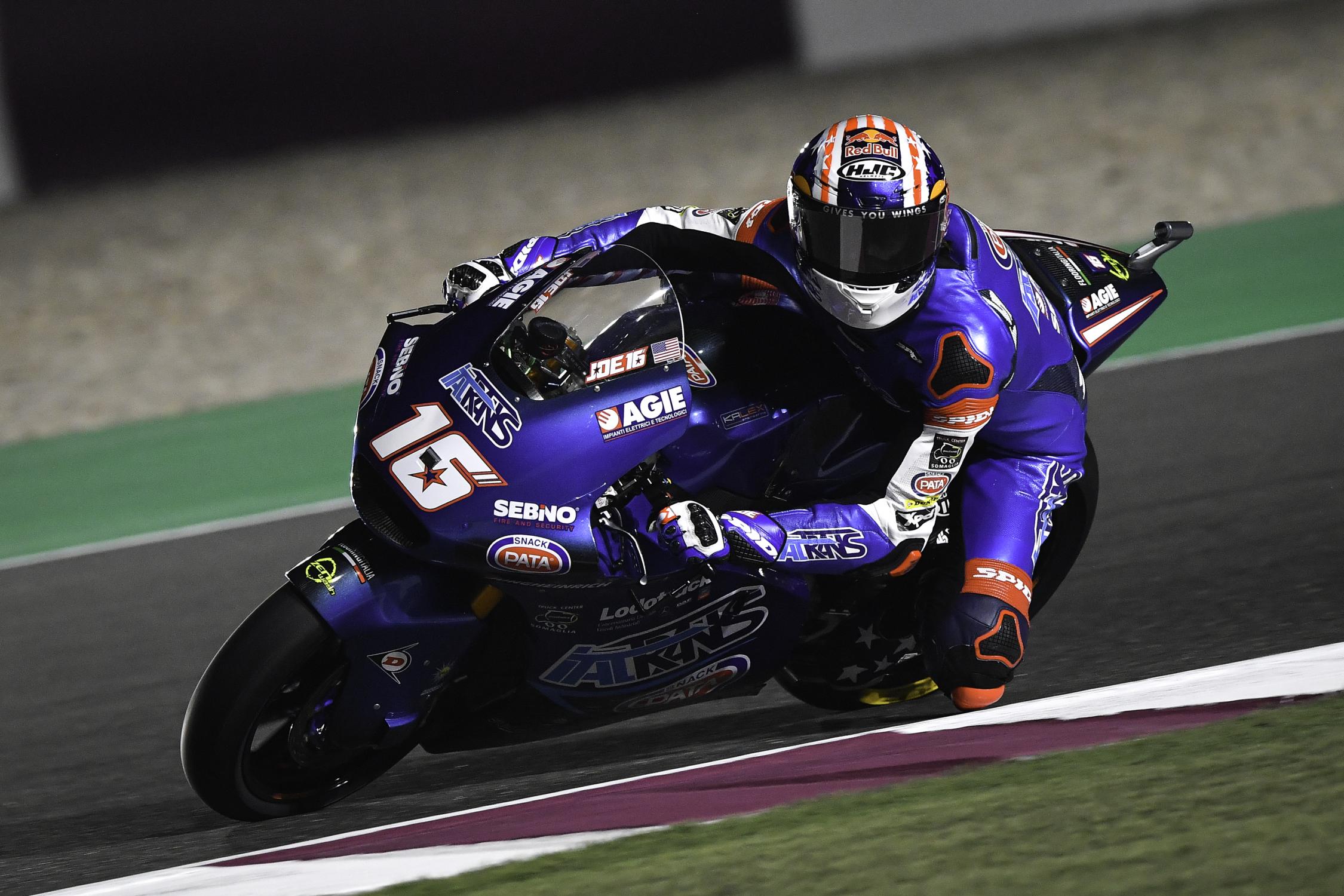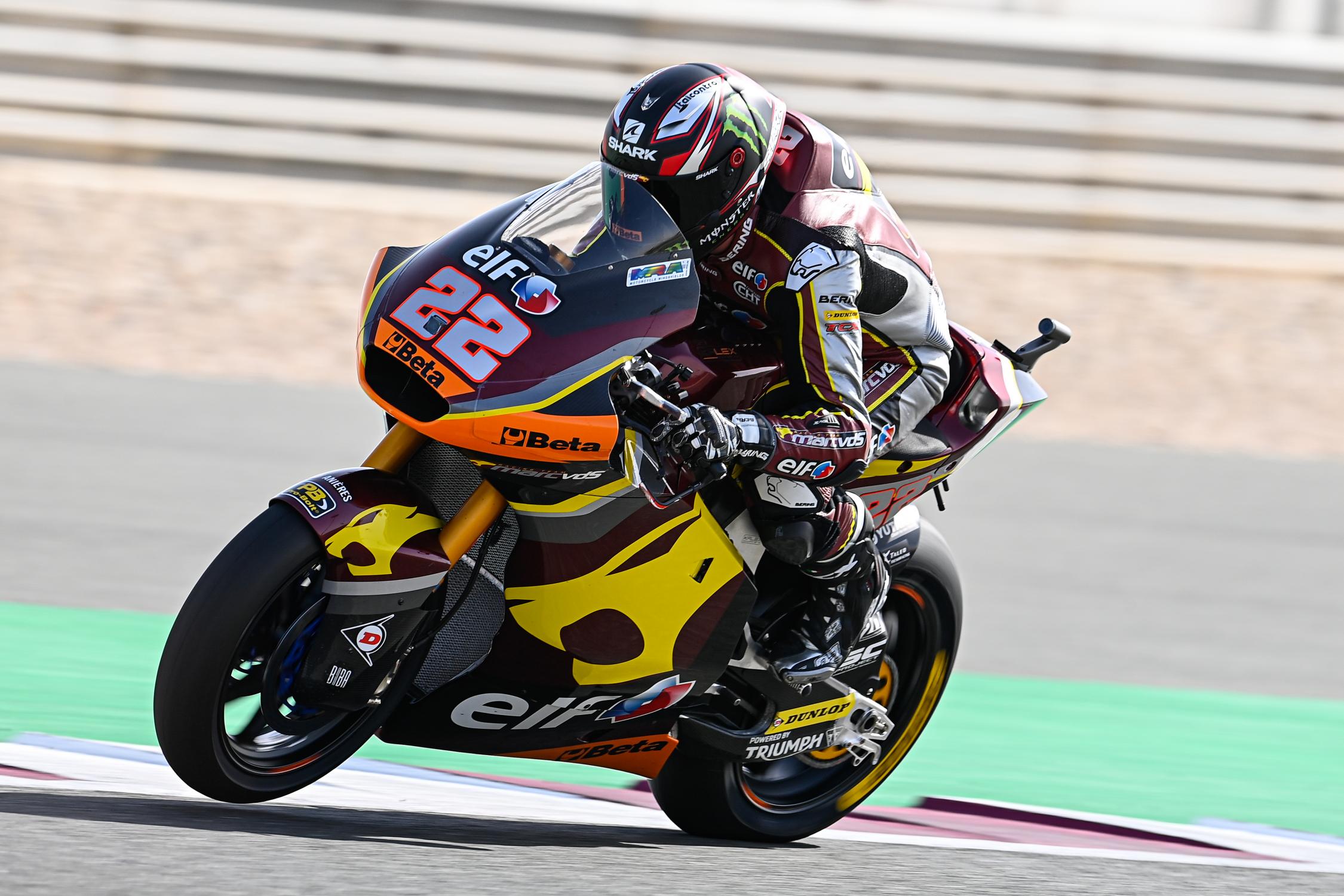During the winter tests in Qatar, but also during the free sessions and in the race last weekend, we saw a lever located near the clutch lever, on many Moto2s. It is simply a brake lever, allowing you to manage the rear brake with your hand rather than your foot. The technical developments seen in 2020 on MotoGP prototypes are coming to Moto2!
Last year, Cal Crutchlow was one of the first drivers to use the rear brake in racing with a lever located on the left hand, in addition to its clutch lever. Marc Marquez also tested it extensively during winter testing, but his 2020 season having been aborted, he did not have the opportunity to use it in the race. Since then, almost all the riders on the MotoGP field have used this trick. For what ? This allows braking pressure to be moderated more precisely, and it also feels more natural (it resembles bicycle brakes).
In MotoGP, it took a little time to become widespread on the grid. Using a rear brake with the left hand, however, is not without its problems. For Brembo, sole supplier of the MotoGP braking system, whether thumb or lever, this changes nothing. The problem is the position, because there is the clutch handle nearby. Thanks to the use of the seamless box, it is only used during departures, but it takes up space, and you have to integrate the second handle without risking accidentally grabbing the wrong one.
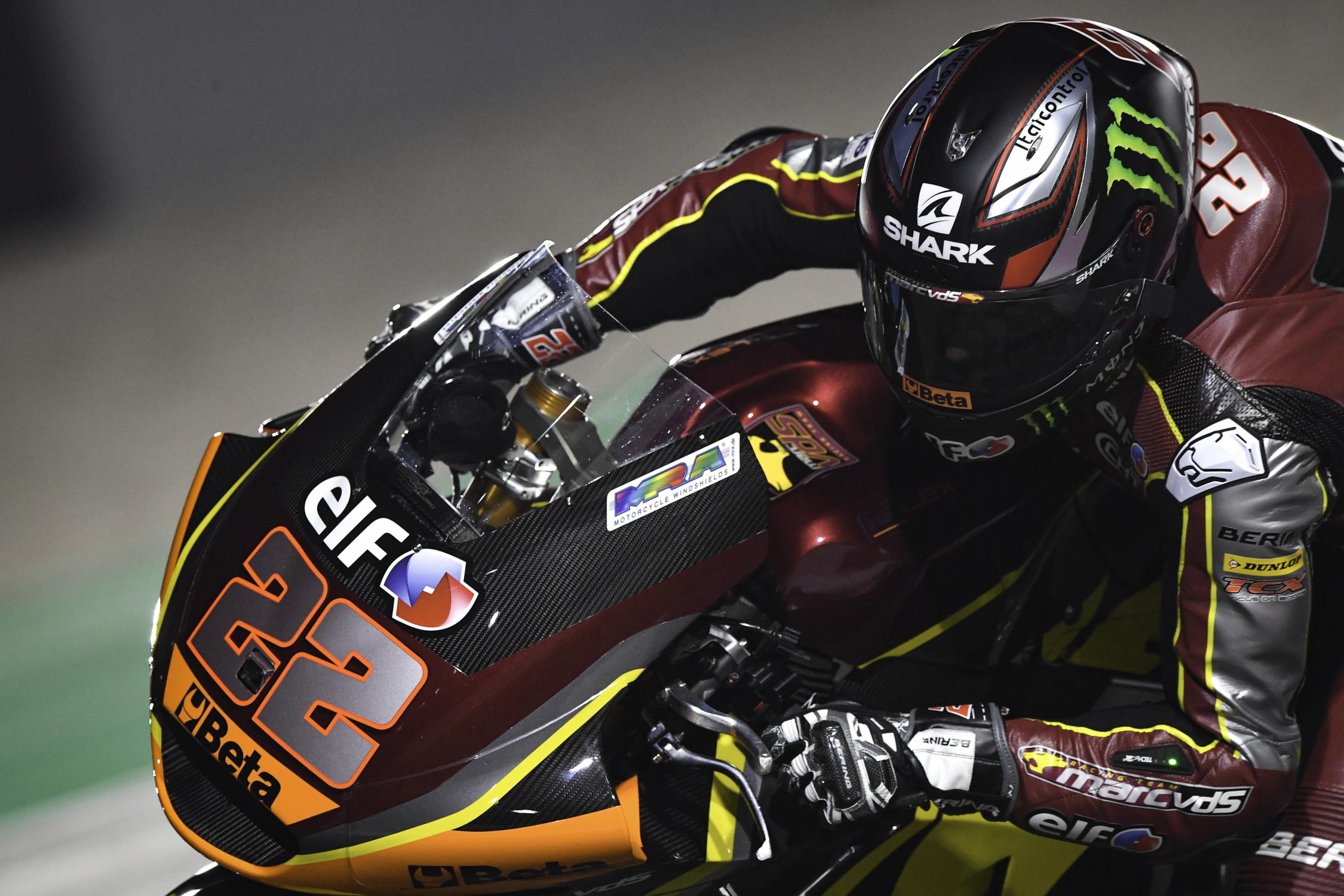
In Moto2, this was not possible until now: the ECU did not allow the use of quickshift to downshift, so you had to use the clutch lever. But since the ECU has evolved and allows downshifting, the rear brake with a lever in the left hand seems to have been adopted by the majority of riders on the Moto2 grid, from Sam Lowes to Toni Arbolino via Joe Roberts, Lorenzo Baldassari or even Jorge Navarro, to name a few.
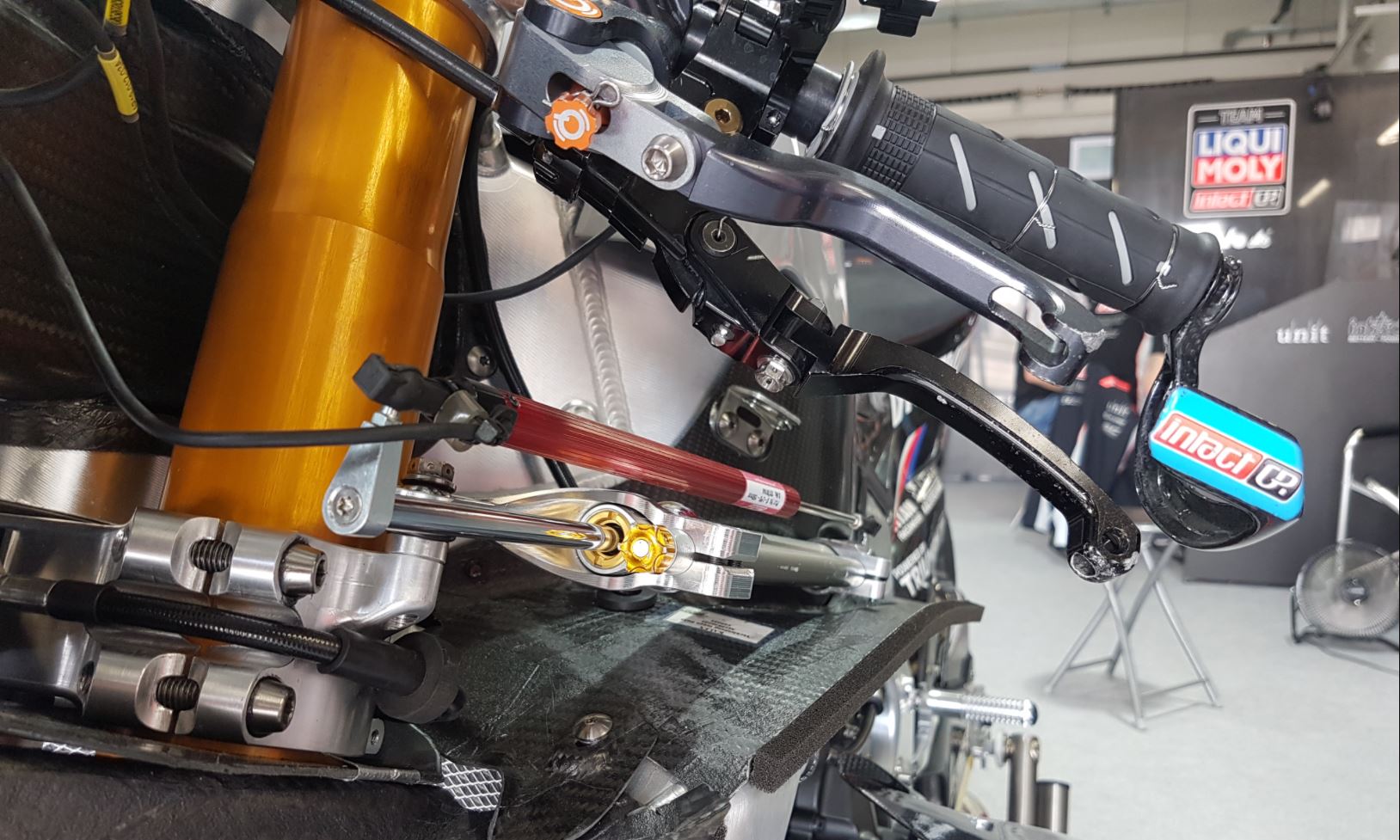
In this photo we see a system developed by the Dutch company Qnium, which offers a range of solutions adapted to braking with a left-hand lever. The Moto2 of Tony Arbolino, rookie in the IntactGP team, is also equipped with a system of sensors to measure steering efforts.
Why did everyone take so long to switch to using a lever brake, if it was already fitted to other prototypes? In fact, it's not just about setting up the system and letting the pilot take care of it. It's not easy to change from one day to the next, because managing the braking effort with the foot is not the same with the finger or the hand.
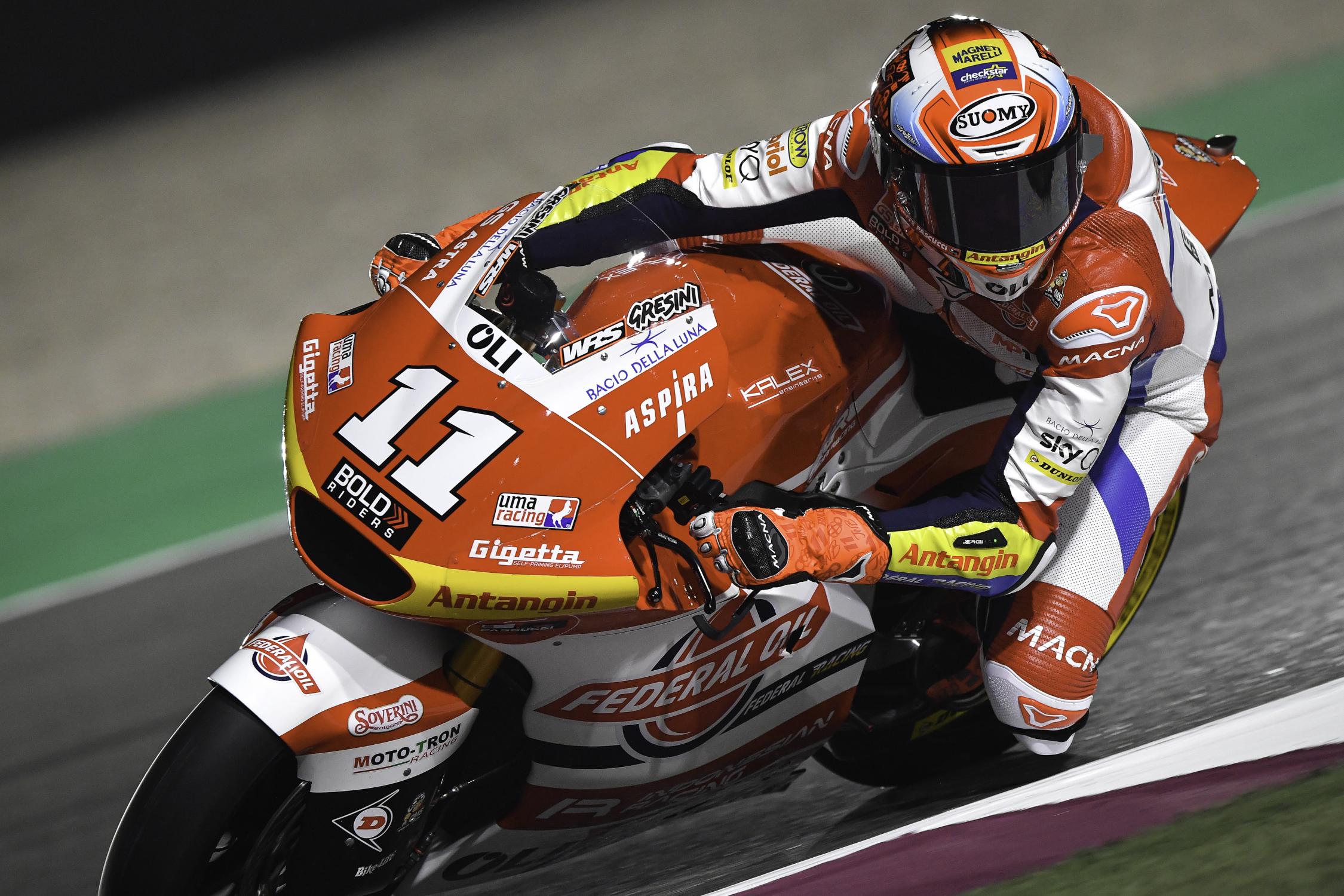
These brake levers can provide more feel than the brake pedal, giving them advantages over more usual thumb and foot systems. But they also have disadvantages. The first is that they don't give as much braking pressure as foot-operated systems and the second is that they can be difficult to get used to because for long periods you have to have your finger extended away from the handlebars . Some drivers find that this does not help when they have to change angle (during a chicane, for example).
Additionally, there is the mental factor to take into account. Driving should be as natural as possible, so drivers need time to adapt to a change as big as going from foot braking to finger braking, it's a new feeling that must be understood . And it's very difficult during the season, because if a driver has problems on a circuit just after changing the position of the rear brake, and it may be that the driver is using the rear brake in a different way .
